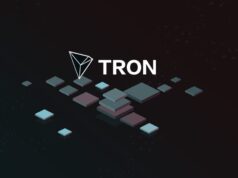In a world where digital transactions are increasingly becoming the norm, it’s essential to understand various payment systems, one of which is ACH direct deposit. In this comprehensive guide, we delve into the realm of ACH, demystifying it, and shedding light on how direct deposits through ACH work.
What is ACH Direct Deposit?
The Automated Clearing House (ACH) is an electronic network for financial transactions in the United States. It processes large volumes of credit and debit transactions, including direct deposits for payroll, government benefits, and other payments. ACH direct deposit allows money to be transferred from one bank account to another without the use of paper checks, wire transfers, or cash.
Understanding the Process

Initialization
- Employer Setup: An employer intending to pay employees through ACH direct deposit must first set up this feature with their bank. The bank then communicates with the ACH network to initiate the direct deposit process.
- Employee Authorization: Employees must provide their bank account information and authorization to receive payments electronically. This step is crucial for the protection of their private financial information.
Processing
- Transaction Input: Employers send the ACH entries to their bank, which includes the employees’ bank account information, the payment amount, and the payment date.
- Batch Processing: Transactions are grouped into “batches” and sent to the ACH network by the financial institution. The ACH network then sorts these batches and forwards them to the receiving bank or financial institution.
- Transaction Posting: The receiving bank posts the direct deposit to the employees’ accounts. This step finalizes the direct deposit process, making the funds available to the employees.
Timeline
- Standard Timeframe: Typically, the ACH direct deposit process takes 1 to 2 business days to complete. The exact timing depends on the banks’ processing schedules.
Advantages of ACH Direct Deposit
Convenience
- Automated Process: The ACH direct deposit system is automatic, reducing the need for writing and depositing paper checks.
- Fast and Timely: It ensures that employees receive their wages promptly, eliminating the delays associated with other payment methods.
Security
- Reduced Risk: ACH direct deposit minimizes the risk of check fraud and lost or stolen checks.
- Protected Information: The ACH network adheres to strict security standards, protecting sensitive financial information.
Cost-Effectiveness
- Lower Costs: Employers save money by not printing and handling paper checks.
Potential Drawbacks

Delayed Transactions
- Processing Time: ACH direct deposits are not instant, and processing delays can occur.
Errors and Issues
- Mistakes and Corrections: Incorrect account information can cause payments to be sent to the wrong accounts, requiring time and effort to correct.
Tips for Efficient ACH Direct Deposit
For Employers
- Provide Clear Information: Employers should give detailed information to employees about the ACH direct deposit system, ensuring they understand the process.
- Ensure Accurate Details: Employers must ensure that the account information provided is accurate to avoid any issues or delays in payment.
For Employees
- Verify Account Information: Employees should double-check their account details to ensure they are correct.
- Understand the Timeline: Employees must be aware of the processing time to know when to expect their payments.
Deeper Dive into ACH Transactions

While we’ve outlined the basic steps, it’s also important to understand the technical aspects of ACH transactions to ensure seamless execution and to be aware of the potential issues that might arise.
ACH Debit vs. ACH Credit
- ACH Debit:
- ACH debit transactions occur when funds are pulled from a bank account. For example, when setting up automatic bill payments, the company withdraws the money directly from the customer’s bank account.
- ACH Credit:
- ACH credit transactions happen when funds are pushed into a bank account. Direct deposits from employers to employees are examples of ACH credit transactions.
Each type has its purposes, and knowing the difference is crucial for accurate financial management.
NACHA Operating Rules
- Compliance:
- All ACH transactions must comply with the rules set by the National Automated Clearing House Association (NACHA). These rules are designed to ensure the reliability and security of the ACH network.
- Updates:
- NACHA frequently updates its rules, so staying informed about the latest regulations is essential for both employers and financial institutions.
Troubleshooting and Resolving Issues
Despite the efficiency of ACH direct deposit, issues can still arise. Here’s how they can be resolved:
For Employers
- Contact Financial Institution:
- Employers should reach out to their bank or financial institution immediately if there’s a problem with the ACH direct deposit process.
For Employees
- Report Issues Promptly:
- Employees should notify their employer or bank as soon as they notice any discrepancies or issues with their direct deposit.
Common Problems
- Incorrect Account Information:
- This issue can be avoided by double-checking account information before processing the transaction.
- Insufficient Funds:
- Employers must ensure they have enough funds in their account to cover the payroll direct deposit.
Common Misconceptions About ACH Direct Deposit

It’s also crucial to debunk some common myths and misconceptions regarding ACH direct deposit:
Instantaneous Transactions
- Not Real-Time:
- A common misconception is that ACH transactions are instantaneous. However, as mentioned, they typically take 1 to 2 business days to process.
Security Concerns
- High-Security Standards:
- The ACH network follows high-security standards, ensuring the safety and confidentiality of financial information.
Frequently Asked Questions
How to Set Up ACH Direct Deposit?
- Employer Responsibility:
- Employers must contact their bank to set up ACH direct deposit and obtain authorization from employees.
- Employee Responsibility:
- Employees need to provide their bank account information and authorization to their employer for receiving payments via ACH direct deposit.
Is ACH Direct Deposit Safe?
- Enhanced Security:
- Yes, ACH direct deposit is a secure method for processing payroll transactions. It adheres to stringent security protocols to protect financial information.
Conclusion
In wrapping up this comprehensive guide, ACH direct deposit stands out as an efficient, secure, and cost-effective method for processing payroll and other payments. Proper understanding, adherence to NACHA rules, timely troubleshooting, and debunking misconceptions are key to leveraging the benefits of ACH direct deposit fully. Both employers and employees play a crucial role in ensuring the smooth execution of ACH transactions, contributing to a more streamlined and effective payroll process.















